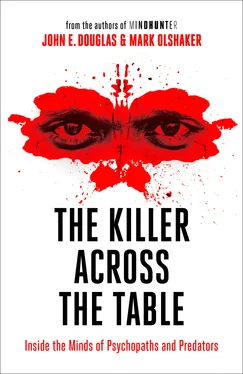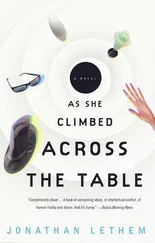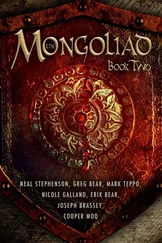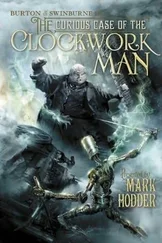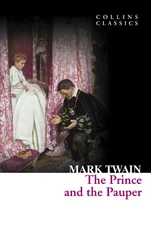We understood and tried to make clear to potential law enforcement clients that there were certain types of crimes for which our form of criminal investigation was useful and some for which it was not. For example, a run-of-the-mill back-alley robbery or felony murder—a crime of opportunity in which quick profit was the only motive—did not lend itself to profiling or behavioral analysis. It is all too common a scenario, with a predictable profile that fits too many people to be useful. However, even in a case such as that, we might be able to suggest proactive techniques that could help flush out the offender.
On the other hand, the more psychopathology the offender demonstrates, as evidenced by the analysis of the crime, the more we can do in profiling and helping to identify the culprit. But we had to be able to undertake our analyses and consult with local investigators in a context that would use psychology but be effective in crime solving.
In 1988 Bob Ressler, Ann Burgess, and I published our findings and conclusions in book form, entitled Sexual Homicide: Patterns and Motives. The reception in both the academic and law enforcement communities was gratifying. But we were still working toward the goal of making our studies and research useful in a practical way to law enforcement professionals in the manner that mental health professionals use the Diagnostic and Statistical Manual of Mental Disorders, now in its fifth edition (DSM-5).
We came to realize that truly to understand an unknown subject (UNSUB in our parlance), you had to understand why and how he was committing a particular type of crime. And by the same token, you could classify crimes by motivation rather than simply by result or outcome. This was the challenge I tackled in the doctoral dissertation I was working on: evaluating different ways to train law enforcement officers in how to classify homicides. In other words, I was trying to present this material in such a way that it would actually help solve cases by explaining the behavioral dynamics of the crime.
The ultimate result, growing out of my dissertation research and involving some of the best minds in the FBI and law enforcement, was the Crime Classification Manual, published in 1992, with Ann Burgess, her husband, Allen Burgess, and Bob Ressler. By the time of the Crime Classification Manual’s initial publication, we already had a significant number of profiling victories under our belts, including the Atlanta Child Murders; Arthur Shawcross’s murders of prostitutes in Rochester, New York; the Francine Elveson murder in New York City; the Trailside Killer in San Francisco; and the murders of Karla Brown in Illinois, Linda Dover in Georgia, Shari Faye Smith in South Carolina, and FBI employee Donna Lynn Vetter in Texas. In addition, we were also able to use profiling and behavioral science to help free wrongly convicted David Vasquez, an intellectually challenged individual who was in prison in Virginia. Though he had confessed to several murders under coercive circumstances, we were able to link the crimes to the actual killer, Timothy Spencer, who has since been tried and executed.
Looking back on it, an insanity defense like the M’Naghten Rule was one of the main reasons Ann and Allen Burgess, Bob Ressler, and I set out to create the Crime Classification Manual. From a criminal investigation standpoint, it didn’t really matter to us whether something was a disease, a disorder, or neither. We were interested in how behavior indicates criminal intent and perpetration, and how that behavior correlated to the thinking of the perpetrator right before, during, and after the commission of the crime. Whether that behavior was disordered to the extent that it would militate against guilt (given that legally, each crime is composed of two elements—the act and the criminal intent to act) was something for the jury and judge to decide.
But these reports on McGowan’s mental state made me even more uncomfortable about their role in determining his suitability for parole. If you had severe physical symptoms that definitely indicated something was very wrong and you were examined by four different doctors, each of whom came up with a different diagnosis, you would seriously question the efficacy of their diagnostic protocols. You would, unquestionably, demand a battery of tests to determine what was actually ailing you and wouldn’t be satisfied until blood work and endocrine and imaging studies confirmed a specific cause for your ailment.
In most cases, though, no such tests exist for confirming the correctness of a mental diagnosis. We know the symptom—in this case, the brutal rape and murder of a seven-year-old girl—but we cannot prove the cause. So what concerns me the most is how accurately we can predict future dangerousness. It would be like the doctor saying she couldn’t prove what caused a condition, but she was most interested in whether it would recur. In other words, we can only speculate, only offer an estimation or opinion. But I always start from the same premise, one that I taught throughout my years with the FBI: Past behavior is the best predictor of future behavior.
In 1998, five years after he first examined McGowan, and again at the request of the parole board, Dr. McNiel undertook another evaluation. Again, denying his earlier admission of rape fantasies and sexual attraction to young girls, McGowan chalked up the murder to a bad confluence of events. In McNiel’s words: “The victim happened to come to his home during a moment of abject despair in which he had been actively planning to kill himself for weeks but had been unable to follow through with his suicide plans.” When Joan showed up at his front door, “he became overwhelmed with unexplainable rage.”
As I read over these reports in preparation for my own encounter with Joseph McGowan, one thing struck me particularly about this latest report: a moment of abject despair in which he had been actively planning to kill himself for weeks.
I wasn’t sure whether or not he had been planning to kill himself, but from the moment I had been brought into this case and then started learning the details, my first questions had been, Why this victim, and why then?
Even if he was sexually drawn to little girls, and even if he was unsure of his own manhood, even if he was under the thumb of a domineering mother, what was going on in his mind at this particular time that led him to the high-risk crime of assaulting and killing a child from his own neighborhood, in his own house?
Dr. McNiel told the parole board that he considered his latest evaluation generally consistent with his earlier one, though in this later report he pointed to McGowan’s “potential for dissociation at times of anger, and also the likelihood of severe sexual pathology involving pedophilia and sexual violence, which he continues to deny.” He also said that McGowan had “paranoid tendencies and significant violence potential,” and that, given “Mr. McGowan’s continued inability to deal with the sexual aspects of his crime, it would appear that he has made very little progress in confronting the pedophilic impulses and sexual sadism that erupted in his crime. As such, he should be considered a poor risk for parole.”
Okay, I said to myself. So even though Dr. McNiel considers his two reports generally consistent, and though the subject had had no serious problems in prison, while once he said he saw “no evidence to indicate Mr. McGowan is at imminent risk of violent behavior,” he now sees “significant violence potential.”
So what was this guy McGowan actually all about? And if I could probe deeply enough, would he show it to me?
6
RED RAGE AND WHITE RAGE
From the outside, the New Jersey State Prison at Trenton looks just what you would imagine a maximum security institution to look like: thick brownish-gray walls topped with coiled razor wire. Glassed-in guard towers stand at the corners and in the middle of the wall expanses, with the slanted tops of functional and unadorned buildings visible behind them. Even the newer part of the prison is grim-looking and fortresslike, a solid red brick structure whose narrow window slits clearly delineate the boundary between freedom and incarceration.
Читать дальше
